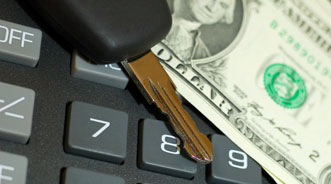Recent Surveys Give Opposite Conclusions about Consumers’ Intentions with Tax Refund Money

Are consumers going to spend their income tax refunds at dealership service departments and showrooms or are they going to put that money in a savings account for later?
Recent surveys by USAA and eBay Motors showed consumers might be heading in different directions.
A survey commissioned by eBay Motors this tax season revealed that consumers are planning to spend more of their refunds on auto-related purchases this year than last, and many of these purchases will be for standard maintenance or repairs they have delayed until their tax refunds arrive.
Of the more than one-third of American drivers who plan to spend a portion of their tax refund on vehicle-related items, the average amount of their refunds going toward their vehicles is more than $1,000.
The eBay survey results indicated that 42 percent of those drivers who plan to spend at least a portion of their refund on automotive items will spend significantly more on their vehicle this year, relative to last year. Drivers planning to spend a portion of their refund on their vehicles plan to spend an average of 35 percent of their total refund on automotive items.
Of these drivers who will spend refund dollars on auto-related purchases, 25 percent plan to purchase a new or used vehicle.
The remaining respondents in eBay’s survey who are planning to spend refund money on auto-related items reported they will spend money on:
—Vehicle maintenance (such as oil changes, wiper repair, etc.): 57 percent
—Vehicle repairs: 51 percent
—Purchasing new tires: 36 percent
—Cleaning or detailing: 18 percent
—Paying off existing car loan: 13 percent
“With cars on the road remaining at historic ages, the data indicating that many Americans are spending more of their tax refunds on their vehicles this year makes a lot of sense,” said Bryan Murphy, head of eBay Motors.
“We traditionally see activity on eBay Motors rise during this time of year as people have additional funds to shop from the more than 30 million parts and accessories available on eBay Motors to make repairs, maintain or accessorize their vehicles, or to buy a new or used vehicle,” Murphy continued.
The survey also revealed that 46 percent of drivers using refund dollars for auto-related purchases indicated that the way in which they purchase these items is changing, due to the technology they use.
For instance, 35 percent of respondents using refunds to purchase automotive items said they are likely to make the purchase online with a computer, and 16 percent are likely to purchase these items using a mobile device.
“This reflects trends that eBay Motors is seeing as well, as consumers are buying more than 10,000 cars and 500,000 parts globally each week through eBay mobile apps,” site officials said.
In offering its methodology, eBay Motors explained this survey was conducted online in March among 5,000 U.S. adults between 18 and 60 years old.
Key findings are based on 1,000 respondents who indicated they would spend their tax refund on auto related items. Surveys are not specific only to eBay customers or eBay app users.
Meanwhile, if USAA’s survey is accurate, consumers — especially younger ones — might not be at the dealership any time soon. The USAA survey showed the majority of younger potential car buyers might not be spending their tax refund at dealerships right away.
According to USAA's 2013 Tax Season Survey, American taxpayers are less optimistic about this year’s tax refund than they were last year, and more than half of those surveyed (53 percent) expect to receive a smaller refund than they did in 2012.
Based on survey results, nearly 65 percent of Gen Xers (individuals ages 35 to 44) expect a smaller refund than last year, compared to 42 percent of their Millennial peers (persons ages 18 to 34).
In fact, USAA discovered more than half of Millennial taxpayers (56 percent) expect the same or higher refund this year.
In addition to increased optimism about a higher return, the survey showed that 63 percent of Millennials who have not yet received this year's refund plan on stashing their cash in savings — an 11-percent increase compared to how they allocated last year's refund.
“It’s interesting — but not surprising — to see the negative sentiment among taxpayers,” said Scott Halliwell, a certified financial planner at USAA.
“With all that's taken place in Washington over the past few months, a lot of people are confused and concerned about how it will impact their taxes,” Halliwell went on to say. “Continued economic volatility and ambiguity around the effects of sequestration have many confused and concerned about their tax refunds. Interestingly, Gen Xers appear to be much more skeptical about their refunds than their younger Millennial counterparts.”
USAA explained it created the survey based on interviews conducted Feb. 22-24 with 1,008 adults in a random sample of households.
Continue the conversation with Auto Remarketing on both LinkedIn and Twitter.

 View The Latest Edition
View The Latest Edition

